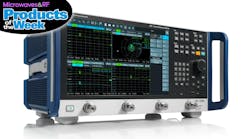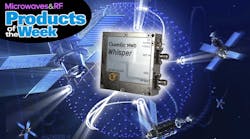X-band Push-Push Oscillator Simulation and Measurement (Part 1) (.PDF Download)
Push-push oscillator configuration via harmonic-balance computer simulation and test measurement is the focus of this article series (see footnote at end of article). Specifically, it lays out basic oscillator theory of generated negative resistance and analyzes the common-collector, single-stage oscillator, which is subsequently utilized as a basic building block of the push-push oscillator configuration (that will be covered in the upcoming part 2).
Uncommon aspects of resonator loading and oscillation conditions are explored in this series. Conventional oscillator theory is reinforced via large-signal loading analysis simulation using the single-stage, common-collector oscillator. The unique operation of the push-push oscillator configuration is examined using harmonic-balance simulation of spectral content and time-domain voltage waveforms. Dynamic load lines are investigated and utilized to explore peak signal excursion and degree of nonlinearity. In addition, predictions of power output, phase noise, voltage control, and harmonic content are compared with measured data.








